There’s
a
common
warning
in
the
age
of
generative
AI:
“Garbage
in,
garbage
out.”
In
other
words,
there
is
no
quality
AI
output
without
quality
human
input.
It’s
a
message
Thomson
Reuters
has
clearly
taken
to
heart.
Thomson
Reuters
employs
more
than
650
attorney-editors
at
Practical
Law
—
all
of
whom
have
10
or
more
years
of
experience
in
law
firms
or
corporate
law
departments.
Not
only
are
Practical
Law’s
AI
products
grounded
in
proprietary
Thomson
Reuters
content,
but
their
attorney-editors
are
also
integral
in
the
testing,
grading,
and
development
of
the
AI
features.
This
means
that
when
an
AI
feature
is
being
tested,
there
are
attorney-editors
—
not
just
technology
developers
—
vetting
the
quality
of
its
outputs
and
guiding
its
development.
The
Dynamic
Tool
Set
features
in
Thomson
Reuters’
Practical
Law
demonstrate
the
effectiveness
of
this
approach.
These
tools
combine
document
templates,
practice
notes,
and
other
guidance
with
generative
AI
to
streamline
litigation
and
transactional
work.
If
you’d
like
to
try
out
the
product,
you
can
do
so
here. You
can
also
read
on
for
a
tour
of
the
Dynamic
Tool
Set
functionality.
Search
&
Summarize
Practical
Law
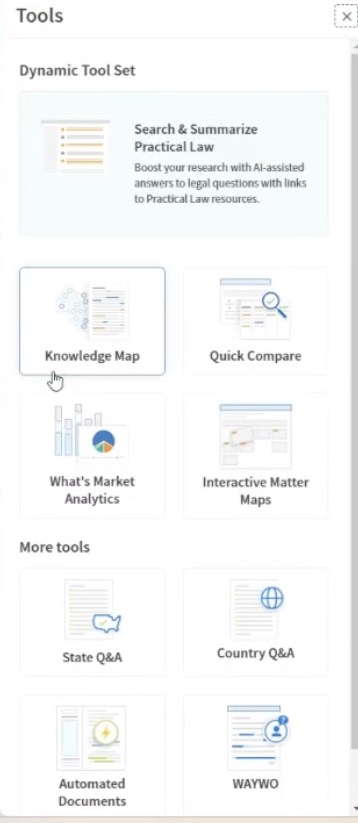
The
Dynamic
Tool
Set
is
accessible
through
a
“toolbox”
within
Practical
Law
(pictured
at
right).
“Search
&
Summarize
Practical
Law,”
the
newest
feature,
leads
the
group.
As
its
name
suggests,
this
tool
is
a
generative
AI-powered
solution
that
draws
on
varied
resources
to
provide
detailed
guidance
when
searching
the
Practical
Law
database.
Its
interface
begins
with
simply
asking
it
a
question,
which
will
prompt
the
tool
to
use
a
blend
of
traditional
and
AI-driven
search
technologies
to
run
your
query
through
Practical
Law.
If
you
would
like
to
refine
your
results,
you
may
ask
follow-up
questions
as
well.
For
example,
here
is
a
query
about
defining
“confidential
information”
in
an
NDA.
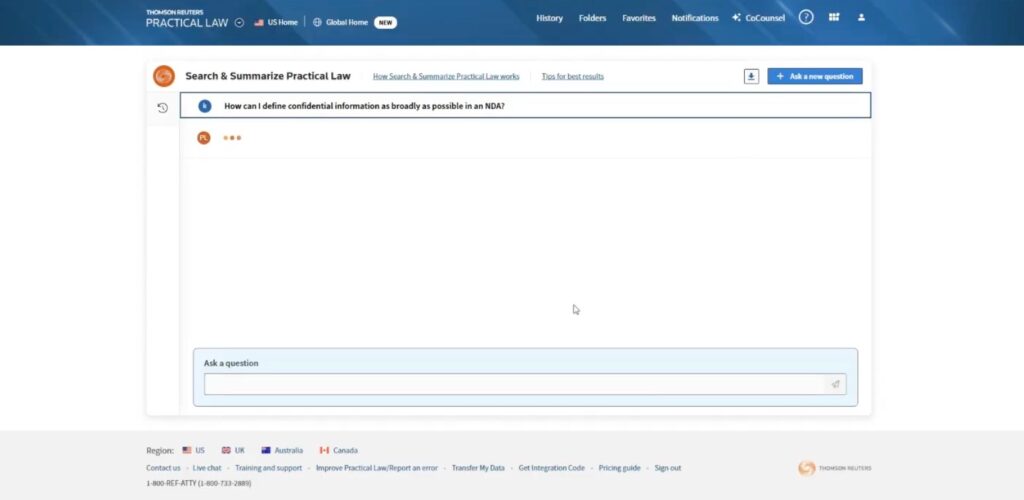
And
here
is
the
result
for
the
query.
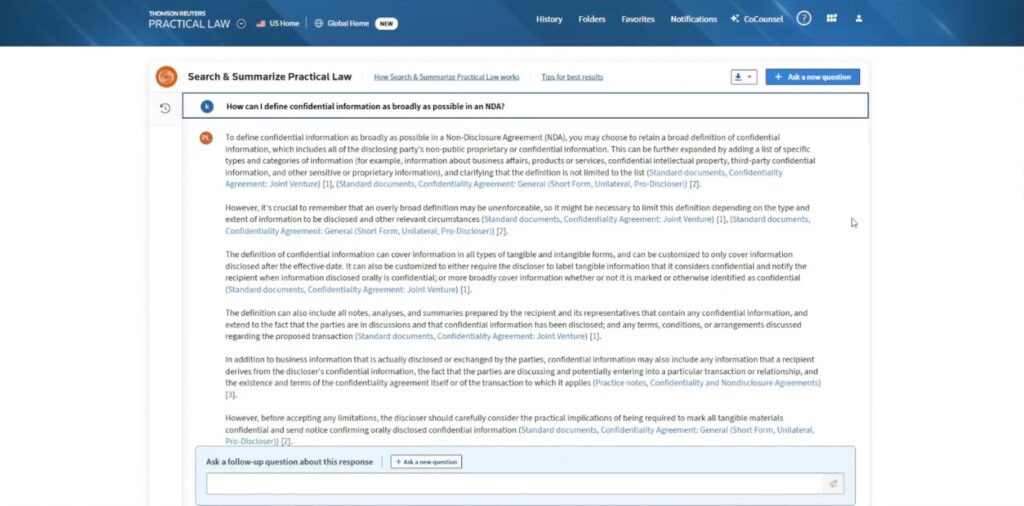
The
tool
ensures
that
only
Practical
Law
content
is
used
when
the
answer
is
generated,
and
this
allows
you
to
verify
the
answer
against
the
source
content
right
in
the
interface.
The
Search
&
Summarize
Practical
Law
results
will
include
a
citation
directly
to
a
Practical
Law
document,
which
can
be
previewed
by
hovering
over
the
results
with
your
mouse.
In
addition
to
the
answer
to
your
question,
the
search
will
return
Standard
Documents,
which
are
document
templates
like
draft
contracts.
It
will
also
return
detailed
Practice
Notes
from
the
Practical
Law
database.
The
tool
searches
across
all
Practical
Law
resource
types
to
bring
together
a
rich
experience
from
across
the
content
set.
Here
are
further
results
for
the
query
about
drafting
an
NDA.
They
include
both
Standard
Documents
and
Practice
Notes
outlining
the
related
legal
issues.
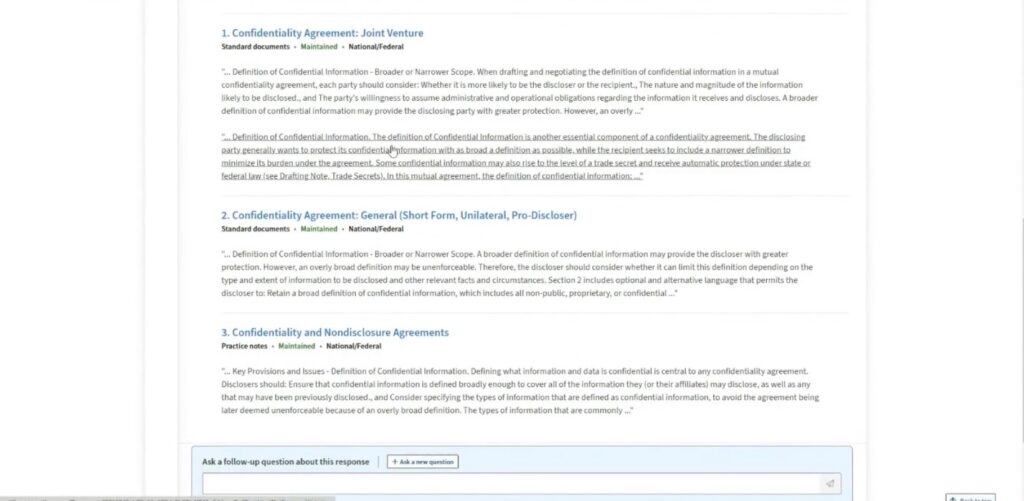
When
you
open
a
Standard
Document,
you
can
simply
download
it
as
a
Word
document
and
begin
customizing
it
to
your
matter.
Thomson
Reuters’
attorney-editors
are
continually
refining
this
content
to
ensure
it’s
up
to
date.
Detailed
“drafting
notes,”
which
provide
analysis
of
the
matter
and
related
issues,
accompany
these
documents.
The
drafting
notes
will
often
include
typical
negotiation
points
that
may
arise
in
a
contract,
along
with
the
standard
provisions
that
are
included
in
similar
deals.
It’s
a
feature
that
allows
attorneys
to
easily
anticipate
these
issues
while
gauging
the
industry
standard.
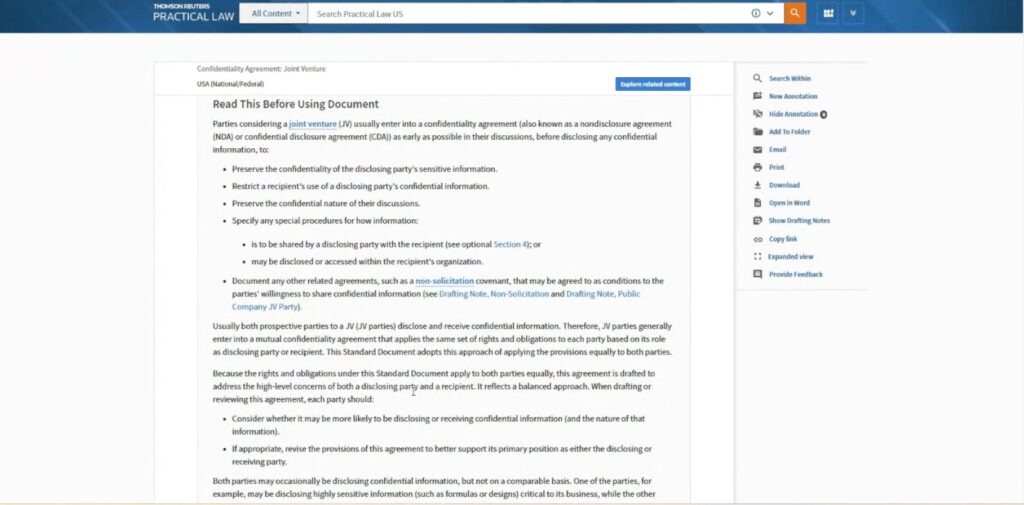
Knowledge
Maps
While
one
benefit
of
Search
&
Summarize
Practical
Law
is
finding
documents
that
cover
the
exact
niche
you’re
seeking,
it’s
not
the
only
way
to
get
that
result.
For
more
visually
focused
researchers,
the
Knowledge
Map
tool
provides
an
alternate
way
to
get
to
the
right
topic.
In
this
view,
your
search
for
confidentiality
agreements
appears
at
the
center
of
a
circle,
surrounded
by
multiple
types
of
editorially
curated
resources.
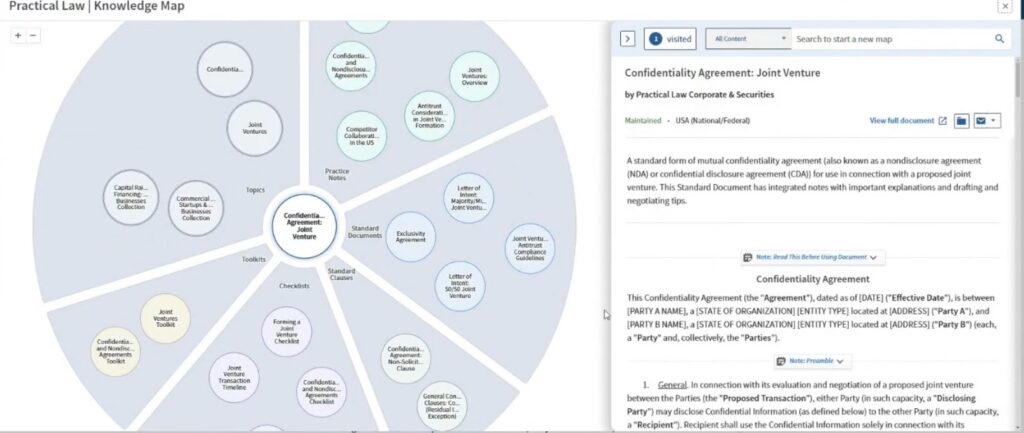
Following
one
of
the
topics
opens
ever-expanding
fields
of
related
topics.
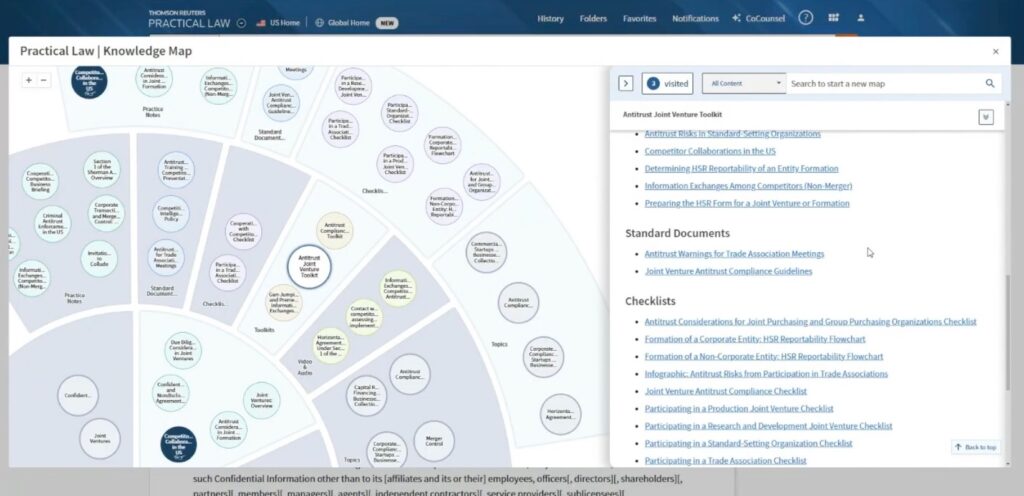
One
particularly
popular
option
is
the
“Toolkits,”
which
combine
Standard
Documents,
Checklists,
Practice
Notes,
and
Legal
Updates
in
one
landing
page
(as
seen
at
right,
above).
Often
compared
to
browsing
a
bookshelf,
the
Knowledge
Map
tool
intuitively
guides
you
to
the
precise
information
you’re
seeking.
Quick
Compare
Another
popular
tool,
called
Quick
Compare,
allows
you
to
create
custom
charts
with
just
a
few
clicks.
This
chart,
for
example,
reflects
a
search
for
minimum
wage
laws
in
several
states.
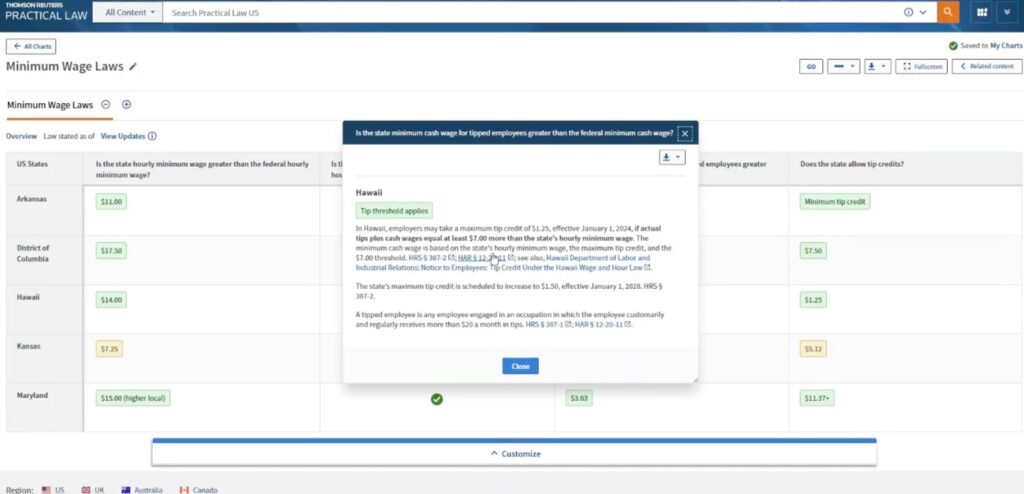
The
tool
allows
you
to
quickly
get
answers
to
legal
questions
in
multiple
jurisdictions.
With
one
click,
you
can
access
further
detail
as
well,
and
all
notes
—
like
the
detail
on
Hawaii’s
minimum
wage
law
above
—
are
maintained
and
kept
up-to-date
by
the
team
of
attorney-editors.
What’s
Market
Analytics
Although
it’s
limited
to
certain
practice
areas,
a
tool
called
What’s
Market
Analytics
also
has
many
devoted
users.
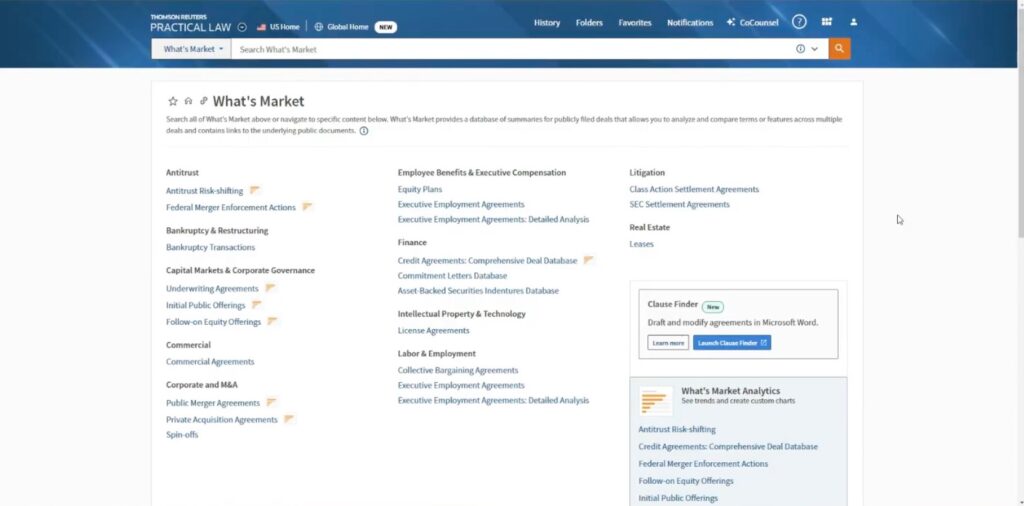
This
tool
allows
you
to
quickly
compare
a
provision
of
a
deal
with
insights
from
public
documents.
As
with
its
peers,
What’s
Market
Analytics
draws
heavily
on
the
work
of
Thomson
Reuters’
attorney-editors,
who
ensure
its
information
is
accurate
and
up
to
date.
Its
public
merger
database,
for
example,
contains
a
running
stream
of
publicly
available
merger
information.
The
attorney-editors
summarize
the
deals,
including
analysis
of
specific
deal
points,
while
linking
out
to
the
related
SEC
documents.
The
documents
the
editors
create
can
be
segmented
with
several
filters,
and
can
then
be
automatically
pulled
into
a
chart.
Here
is
the
data
and
chart
it
returns
on
force
majeure
clauses
in
a
subset
of
cases
chosen
by
industry,
jurisdiction,
and
other
factors,
for
example.
One
helpful
feature:
You
can
look
at
changes
over
time
to
view
trends
within
a
given
industry,
helping
prepare
you
for
negotiations.
Interactive
Matter
Maps
Thomson
Reuters’
attorney-editors
have
also
put
together
the
Matter
Maps
framework,
which
details
the
step-by-step
process
for
a
variety
of
legal
matters
while
guiding
you
from
beginning
to
end.
Here,
for
example,
is
a
Matter
Map
for
a
bidder
on
an
auction
of
a
public
company.
Each
step
in
the
process
links
to
the
relevant
Practical
Law
resources.
Law
firms
can
also
customize
the
Matter
Maps,
including
linking
out
to
the
firm’s
own
documents
within
its
document
management
system,
or
creating
specific
Matter
Maps
unique
to
a
particular
team.
Dynamic
Tool
Set
It’s
clear
that
the
Dynamic
Tool
Set
applications
provide
a
seamless
portal
to
help
you
realize
the
full
benefits
of
Practical
Law.
The
tools
allow
you
to
better
leverage
the
work
of
more
than
650
attorney-editors
in
making
your
practice
more
efficient
—
and
your
research
more
thorough
and
effective.
Curious
about
learning
more?
You
can
try
the
applications
out
here.

